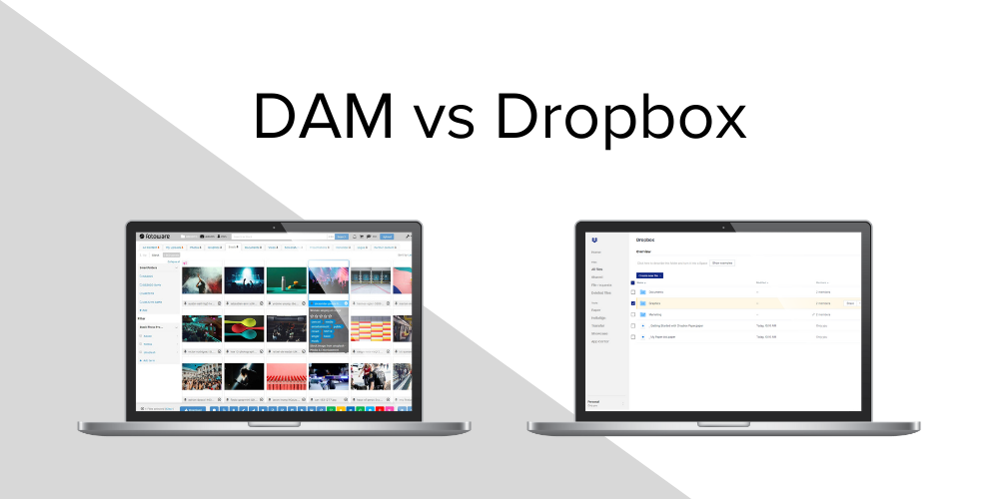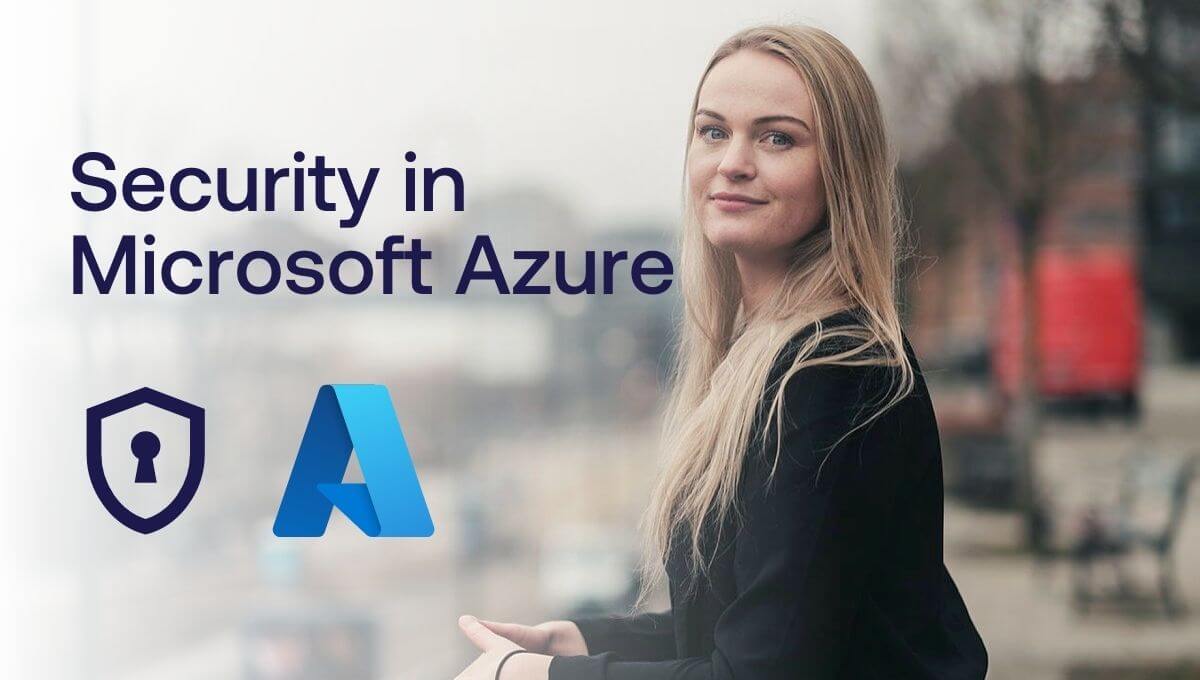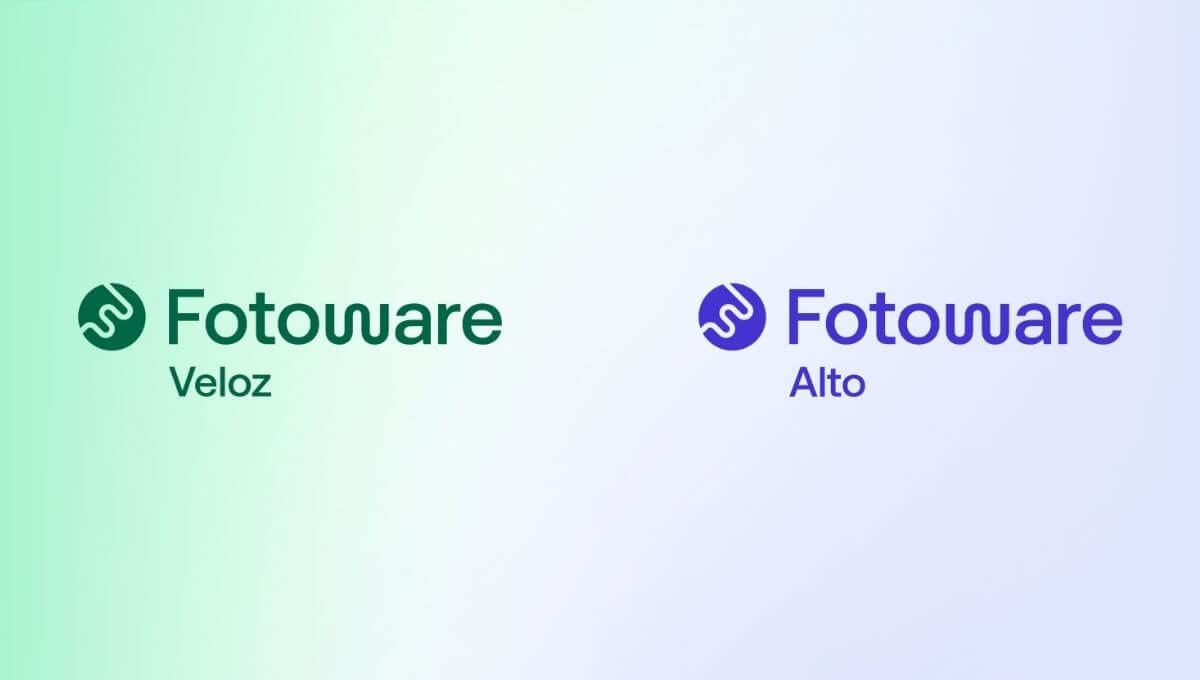
Digital Asset Management vs Dropbox - What's the difference?
One of the most common questions we get about our Digital Asset Management software is: “So, how is this compared to Dropbox?” (or other popular file storage solutions in the cloud such as Google Drive.)
While it’s true that there are some similarities between these solutions, the two systems also have key differences which make them more or less suited to a variety of use-cases, businesses, and industries.
In this article, you’ll learn how DAMs and Dropbox are similar, how they differ, and whether your organization needs one or the other - or both!
First off, what is Digital Asset Management?
A DAM system like Fotoware is a place to store your valuable files, and organize them in such a way that your co-workers can find and use them without your help.
Your files become assets as you add metadata to them, which is descriptive data about the file itself, making it searchable to anyone within your organization.
With proper tagging, the assets can be found, shared, and reused when you need them, and the mundane tasks of organizing and marking them can be automated with customized workflows.
Learn more: The complete guide to Digital Asset Management
DAM vs. Dropbox
Dropbox is a cloud-based file storage and collaboration system to individuals and businesses for exchanging data. Accessing, storing, and retrieving files using the platform powered with cloud technology can be done using any device.
As a system it is focused on the users, not on the assets, so it is ultimately each user’s responsibility to make sure the files are available for the right people.
An important distinction between DAM software and Dropbox is how the files are organized.
While Dropbox uses folder structures, a DAM system stores your digital content all in one place which you can browse visually.
DAM systems require users to add metadata to their files so people can search and filter to find files quickly.
Ultimately, you don’t have to remember exact file names or folder locations to find your files.
Benefits of DAM
- DAM has the key benefit of easy access to digital assets. By having an advanced metadata system in place, it makes it easy to find, access, retrieve, and use all digital assets from one single source. A variety of parameters, such as descriptions, tags, and taxonomies allow you to search for a file independently of its naming convention or the folder it is stored in. The DAM ensures that all files are not only stored, but easily retrievable and can be previewed regardless of file format.
- DAM is flexible, and can be installed both as a cloud solution and on-premise.
- A DAM system - such as Fotoware - comes with a large number of plugins. This enables you to add images and graphics to other programs you might be working with, for example PowerPoint or Adobe InDesign. With plugins and an open API, you can integrate and connect your DAM with almost any other tool!
- The Fotoware DAM makes it easy for you to share your files with externals. By adding selected files to albums and sharing its content with an email or a link, you are always able to know exactly which files are shared. If you want your files to be available for the world to see, you can even make the albums public and customize them to fit your public image.
- With Fotoware, features such as crop and download mean you can easily find assets and quickly download them in the size and the file format you require for a certain use. You can even create presets, making it even quicker to get the assets you require.
- Mundane tasks such as approval processes, or removal of outdated content, can be automated using intelligent workflows. Enabling you to spend more time on creative work.
Benefits of Dropbox
- The main benefit of Dropbox is its capabilities for storage and collaboration. Hosted in the cloud, Dropbox does not initially require a complex set up or timely installations, but will need some configuration if you want it customized to your team structure.
- Teams can edit files as a group, communicate and discuss changes at minimal to no cost. Once you have decided to edit a file that is available in Dropbox, everyone with the right credentials will be able to see it and will receive an instant notification when a change has been made.
- Dropbox automatically backs up camera photos from your computer or mobile device. It will store all albums and images chronologically, back them up, and help you find them whenever you need them. In case you have deleted them from the system by mistake, you will always have the opportunity to re-download them from Dropbox, with a 30 day undo history.
- Sharing with externals is also possible using Dropbox Business, even if the receiver doesn’t have Dropbox themselves.
Main differences:
- Content ownership: In Dropbox, the user is the owner of each folder and file, whereas a DAM works as a central hub for all content. This means that content created by a user remains in the DAM even if the user leaves the organization without sending his/her files to anyone else. It also means that everyone can find the content they need, even if it was originally uploaded by someone from another team (unless the editor has decided on a different solution).
-
Metadata and search: Using Fotoware DAM, you can add metadata to your files so people can find the file with the search function even without knowing the filename. For example, you can add tags such as “nature” to your picture of a forest, so when you try to find the picture you can simply search for the words that spring to mind and Fotoware will display the results. Dropbox also has a search function, but you don’t have the same opportunities to add advanced metadata, making searching for the files more tedious if you don’t know which tags to search for.
-
Supported file types: Dropbox supports standard image formats and is plug-and-play, while a DAM system supports a multitude of file types and can be tailored and customized to your organization.
- Optimized for media files: The Fotoware DAM is an asset library focusing on visual content, unlike Dropbox which treats all files equally. While Fotoware can store Word documents and PowerPoint presentations, it offers many features specifically for managing media files like images and videos. You can tag files with keywords to easily find pictures of a specific person or create predefined crop size lists for quick image downloads in the correct dimensions.
- Sharing with the public: With a DAM system, you can create public archives for the press or share individual collections externally (or internally). This way, anyone can access selected files. Dropbox, on the other hand, is a sharing and collaboration tool, rather than a public display. It also has functions for shared files and folders, but you cannot customize how they will be showcased.
While both Dropbox Business and the Fotoware DAM are both great for storage and file sharing, they offer very different ways of doing so.
While Dropbox is a collaboration tool for files in general, there is a special focus on visuals when using Fotoware.
A DAM like this offers several ways of customizing your interface to fit your particular needs, for instance if you want to showcase certain visuals for an online audience, as well as enabling you to create automated and customized workflows.
Learn more: DAM vs. Image Bank - What's the difference?
Want to learn more?
Talk to one of our experts to discover how we can streamline your organization's content workflows.


